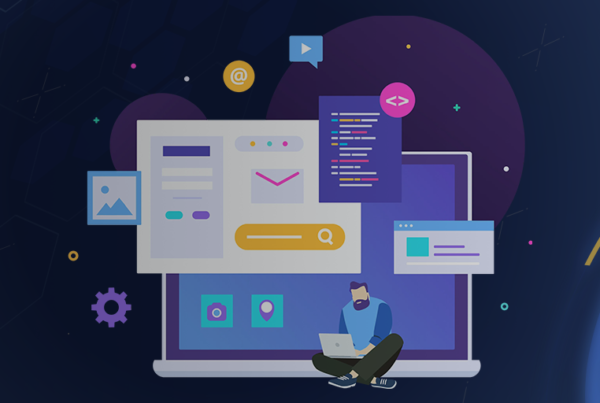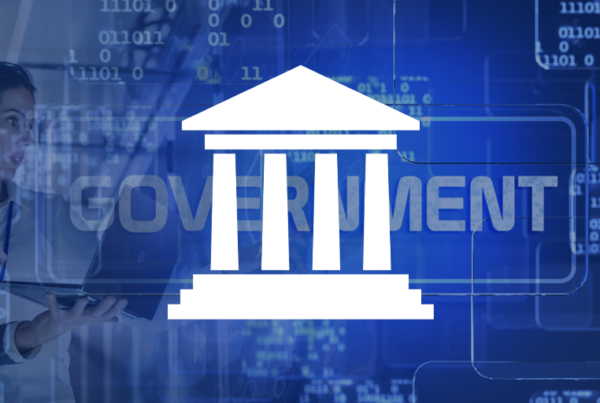Technologies that emerged just over half a century ago seemed revolutionary at the time, promising to lead humanity toward new ways of life. And they did, yet many of those developments seem almost laughable today. That is how technology progresses. We have come a long way, but just imagine what lies ahead.
In 1956, IBM launched the 305 RAMAC system with the IBM 350 Disk Storage Unit as its HDD. Allegedly weighing over a ton, it could store 5 MB of data. Fast forward half a century later, and we find that 5 MB of data doesn’t mean much at all to us today. HDDs now offer terabytes of storage, run at speeds as high as 7000 rpm or more, and you can buy them for well under $1000. This is how advancements in technology and market maturation work, bringing new capabilities that inevitably transform our lives. Like those early computer users, we stand on the brink of some very exciting developments today. The next breakthrough in information technology is clearly due.
Artificial Intelligence—the Game Changer
The biggest changes that the world will witness over the next few decades are in the fields of artificial intelligence and robotics. These technologies will prove to be true game changers. Researchers and developers have been working on robotics and artificial intelligence technologies for many years now, but the next generation of AI-powered high-tech gadgets will be different. First, they will be more powerful, more agile and much smarter. And second, they will no longer remain confined to the industrial sphere. They will become much more mainstream, with broad availability to individual consumers.
The future of technology promises self-driving cars, billions of intelligent and connected devices, sensor networks, 3D printed objects and prosthetic human body parts, genomics, DNA sequencing, nanorobotics and much more. In a multitude of industries—from the web to life sciences, sports, politics, education, banking, healthcare and many others—technology offers tremendous potential to transform our lives as well as the natural environment we live in. Vehicles and homes powered by renewable energy sources will significantly decrease environmental damage, while industrial robots will tremendously enhance productivity. At the same time, artificial intelligence powered by the cloud will potentially augment human intelligence in ways previously unimaginable.
In fact, artificial intelligence could be the cornerstone for the next industrial revolution that transforms our economy and our way of life. We’re clearly on the brink of a massive paradigm shift in the technology landscape. Yet, instead of feeling excited about the limitless possibilities that may unfold, we are skeptical of the future.
Get Over the “Bot Fear”
I have already discussed the applications of robotics and artificial intelligence in enterprise scenarios. While the opportunities that can arise from human–machine cooperation are tremendous, an absurd concern lurks in our minds—that robots will overwhelmingly take over human jobs. In fact, many fear that robots may eradicate the entire human species. I have written several times on this subject, and so have many others. I still retain the view that artificial intelligence won’t threaten our civilization and that our fear primarily stems from negative depictions in the media and sci-fi movies.
If we really examine the chain of events likely to unfold with the advancements in robotics and artificial intelligence, the whole argument about robots depleting human jobs ceases to hold up. If robots replace human workers, then those workers can be redirected to more productive and creative work, leaving the mundane tasks to machines. The industrial revolution of the 18th and 19th centuries also changed the way we live with new machine-driven manufacturing processes. But it didn’t put everyone out of work. Instead, it allowed humans to maximize their potential (at the time). The possibilities that lie ahead of us in the 21st century are enormous. As robotics and artificial intelligence technologies mature, the learning and development of humanity’s future generations will rise dramatically, fueled by exposure to superior computing technologies. Consequently, the human race will learn to employ digital assistants in altogether new ways.
Robotics and artificial intelligence cannot possibly create widespread unemployment. Instead, they would augment human intelligence and human pursuits in unprecedented new ways. As far as the physical dangers of artificial intelligence are concerned, given that it relies on human programming, artificial intelligence cannot independently put humans in jeopardy. Robots can only become a threat to humans through cyberattacks, hacks and misuse by humans.
Curiosity, Anticipation and Concerns
We have been anticipating ubiquitous computing experiences for over half a century now. But let’s be honest, we haven’t yet reached that point where AI-powered, highly intelligent machines offer commodity functionality that could be useful in our everyday lives. We have made significant breakthroughs, but the closest thing we’ve got to a smart, AI-powered tool is probably a digital assistant like Siri, Cortana or Google Now. And humans certainly don’t find it difficult to leave those poor things dumbfounded with relatively simple requests. Technology still cannot approach the complex thinking that humans have. Artificial general intelligence (AGI) is still a long way from reaching the point where it could match or even challenge our general intelligence. But maturing technologies such as advanced analytical processing and the cloud are beginning to open up greater possibilities for AGI—we just have to be open to the idea.
In their special series about artificial intelligence, the BBC stated in one article that, in reality, artificial intelligence surrounds us already—it just doesn’t act in the way we expect. We simply can’t predict exactly how every tool will evolve, because technology makes the unimaginable possible. Inevitably, though, we begin to take even the most incredible developments for granted. We have already grown accustomed to robots that make recommendations, understand our speech and talk back to us. Now we expect more. So we fantasize about humanoid robots that mimic human capabilities and are identical to living, breathing human beings in many ways—yet we fear them all the same. Thus, the debate over the future of artificial intelligence continues. The present may be filled with uncertainty, but we have reason to take an optimistic view of humanity’s coexistence with artificial intelligence. Is it our fears or our fantasies that will ultimately come true? We’ll just have to wait and see.
































